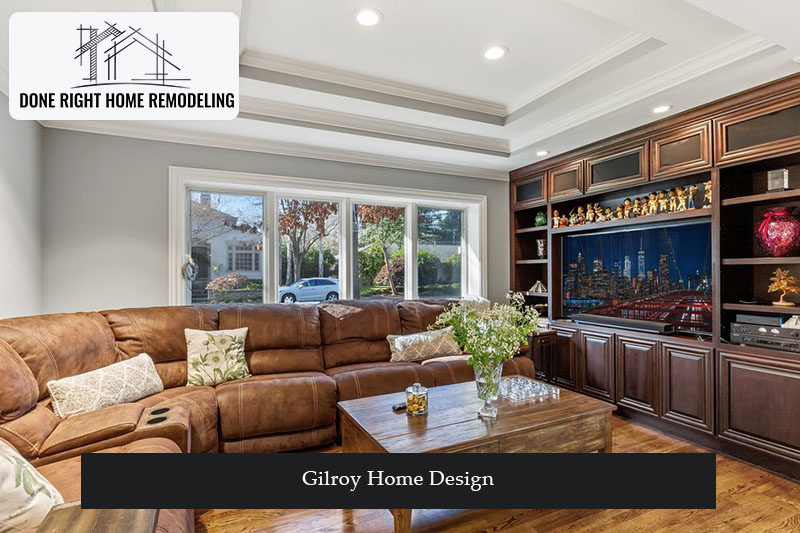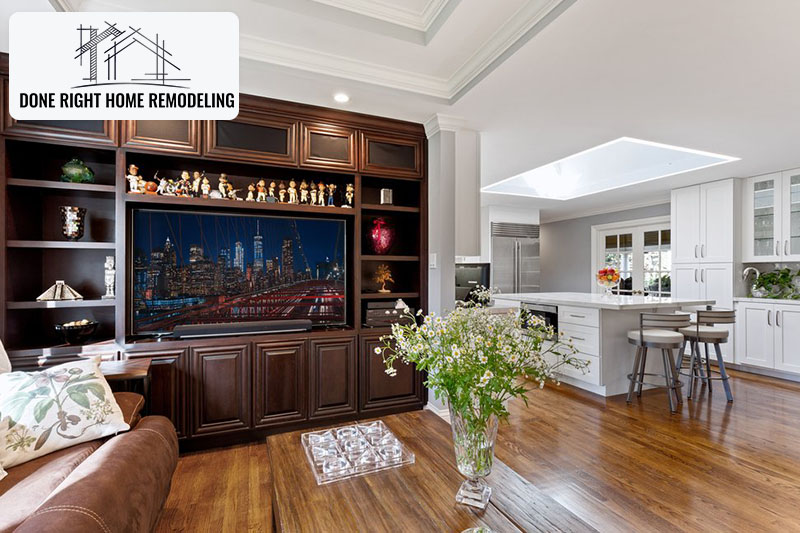LIC #: 1002689
If you are considering creating a residential space that will leave a lasting impression, you should consider hiring professional Gilroy home design services. You are guaranteed of home design solutions for creating beautiful, functional living spaces.

Our Gilroy remodeling contractors are experienced in creating beautiful, space-efficient spaces tailored to your needs and lifestyle. We take the time to listen to your needs and work closely with you to create a truly one-of-a-kind space.
Our Gilroy home design service seeks to integrate different ideas and your preferences to create comfortable spaces for your family.
At Done Right Home Remodeling, we can make your home feel fresh and of-the-moment with time-tested style as the home’s base design as follows:
Moving from inside to outside should be easy, seamless, and comfortable. Opt for large windows and glass doors to open and pull the outdoors in.
Forms and palettes are pleasing to the eyes. In your exteriors, consider layering materials rooted in nature that connect with the natural world.
Come home to cozy and feel-good features and furnishings with curves, circles, and rounded corners, replacing the lines and angles that define a more minimal aesthetic. Consider softer paint colors, textures, and shapes, for instance, curves rather than angular and straight lines.
Amounts of ambient, accent, and task lighting should be appropriate to different rooms and their primary functions.
Carefully consider hardscapes, grasses, plants, and shrubs so they complement the home’s scale and architecture.
Neutrals never go out of style. Consider rich, deeply veined natural stone in bolder hues to impart a one-of-a-kind look to your home.
There are several ways to ensure sustainable and eco-friendly homes. Some sustainable home design ideas are summarized in the table below:
| Consideration | Execution |
| Energy efficiency | Incorporate energy-efficient features such as proper insulation, windows, lightings, and appliances. Consider using renewable energy sources like solar panels to generate electricity. |
| Passive design | Utilize passive design strategies to optimize natural ventilation, thermal mass, and solar orientation by designing windows, shading devices, and airflow patterns to reduce the need for mechanical heating and cooling. |
| Sustainable materials | Choose eco-friendly and sustainable building materials such as recycled or reclaimed wood, bamboo, cork, natural linoleum, and recycled glass. |
| Water conservation | Install water-efficient fixtures like low-flow fixtures, rainwater harvesting systems, and native landscaping that require less irrigation. |
| Indoor air quality | Improve indoor air quality using low volatile organic compounds (VOC) materials, proper ventilation systems, and natural air purification methods. Incorporate indoor plants to enhance air quality and aesthetics. |
| Efficient waste management | Incorporate effective waste management systems, including recycling stations, composting facilities, and strategies for reducing waste generation. |
| Green roof and walls | Install green roofs or living walls to provide insulation, reduce stormwater runoff, improve air quality, and create wildlife habitats. |
When designing a tiny home, space comes at a premium. Our Gilroy home design experts have put together various design ideas to help style your small space to make it appear larger, livelier, and more comfortable. Here’s how.

Design and upgrade your residential space with a perfect blend of beauty and functionality. Contact us today to create your dream home!
When designing your home, prioritize practicality and meet your household needs. Create a layout that enables easy movement between rooms and ensures privacy. Additionally, maximize natural light and capitalize appealing views throughout the house.
To apply for a building permit, submit a completed application form, detailed construction plan, engineering drawings, and supporting documents to the Gilroy Building Division for review and approval.
The Gilroy authorities will review your design plan to ensure compliance with local building codes, zoning regulations, and safety standards. They will assess factors like setbacks, building height, floor area ratio, and other site-specific considerations. Additionally, they may consider the architectural aesthetics and compatibility with the surrounding neighborhood.
Combining different design styles to create a unique and eclectic look is possible. However, ensuring a cohesive and harmonious blend of elements is essential.